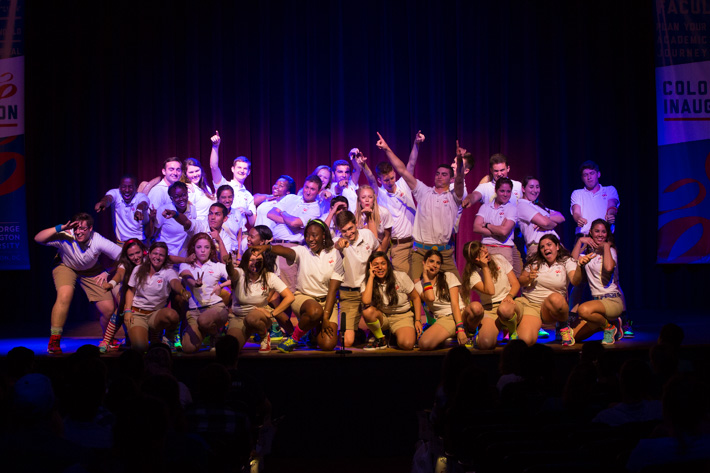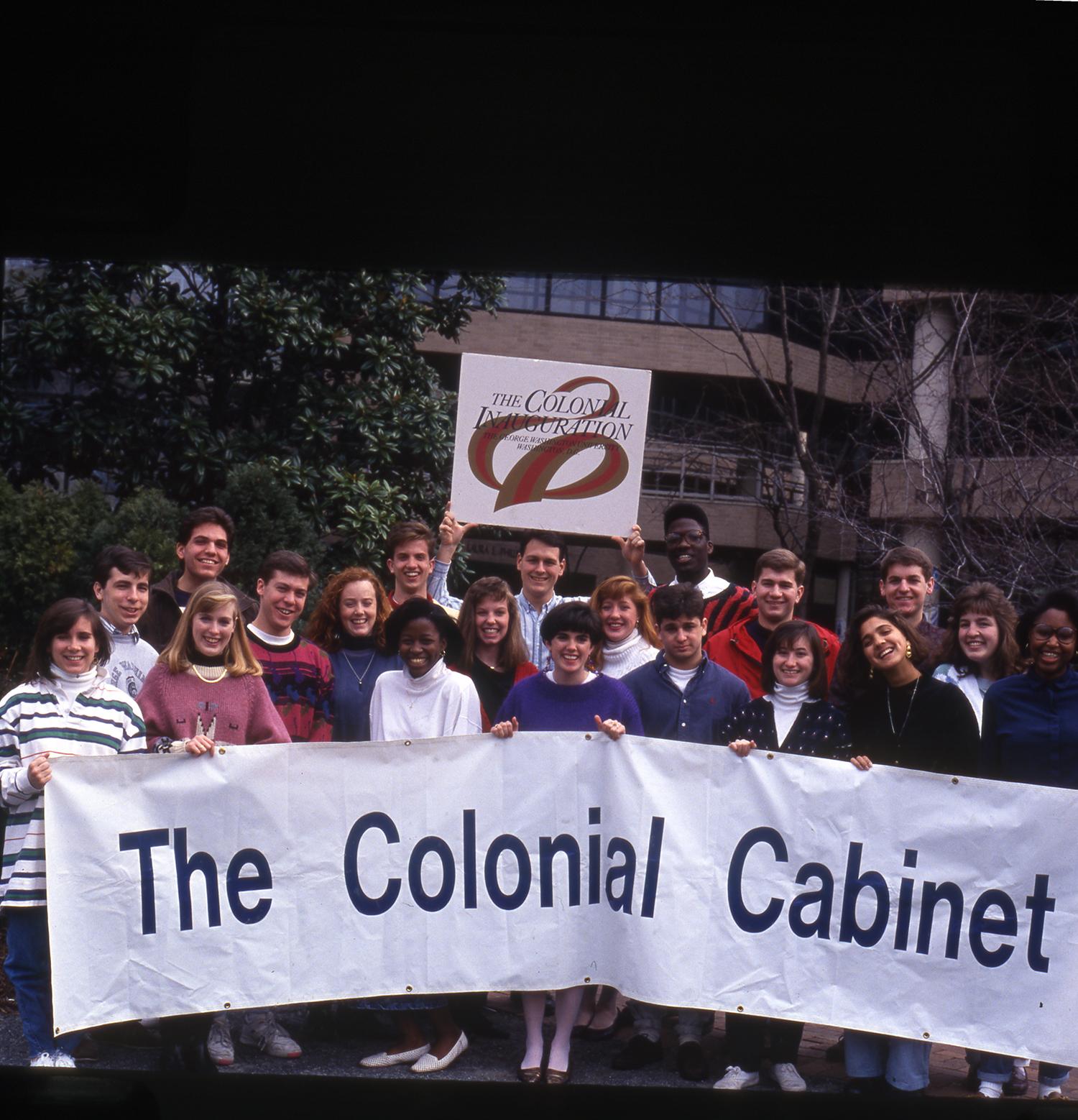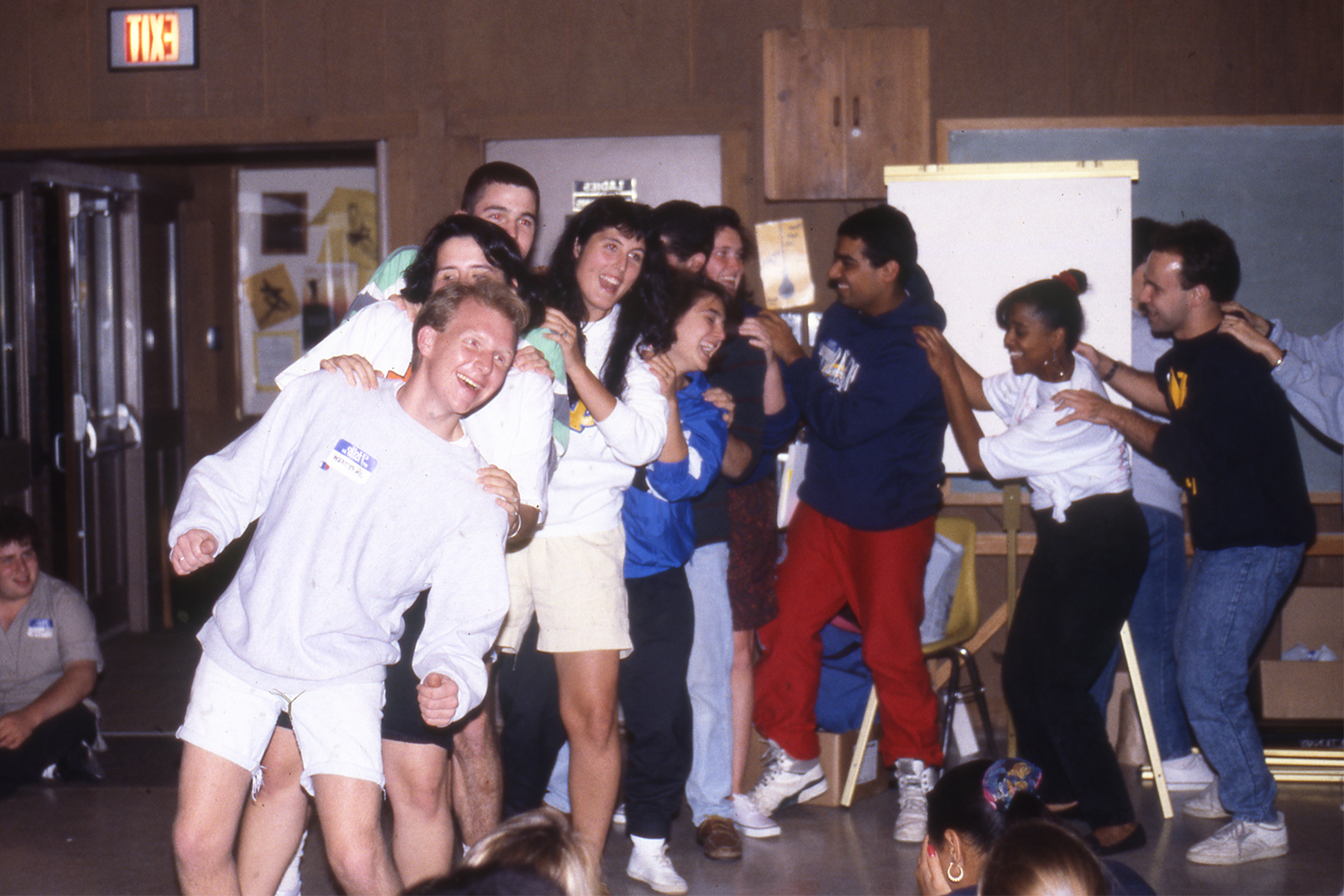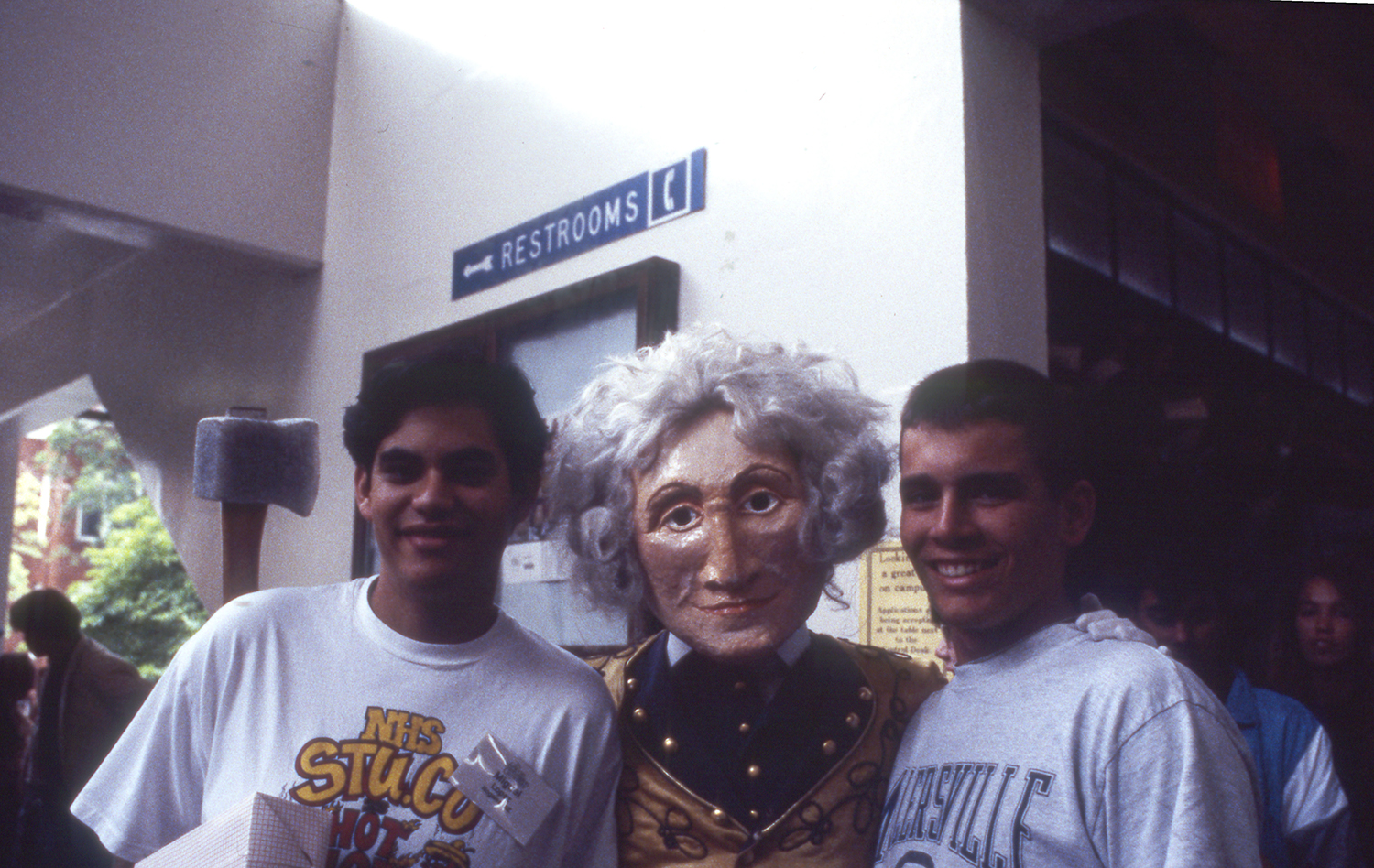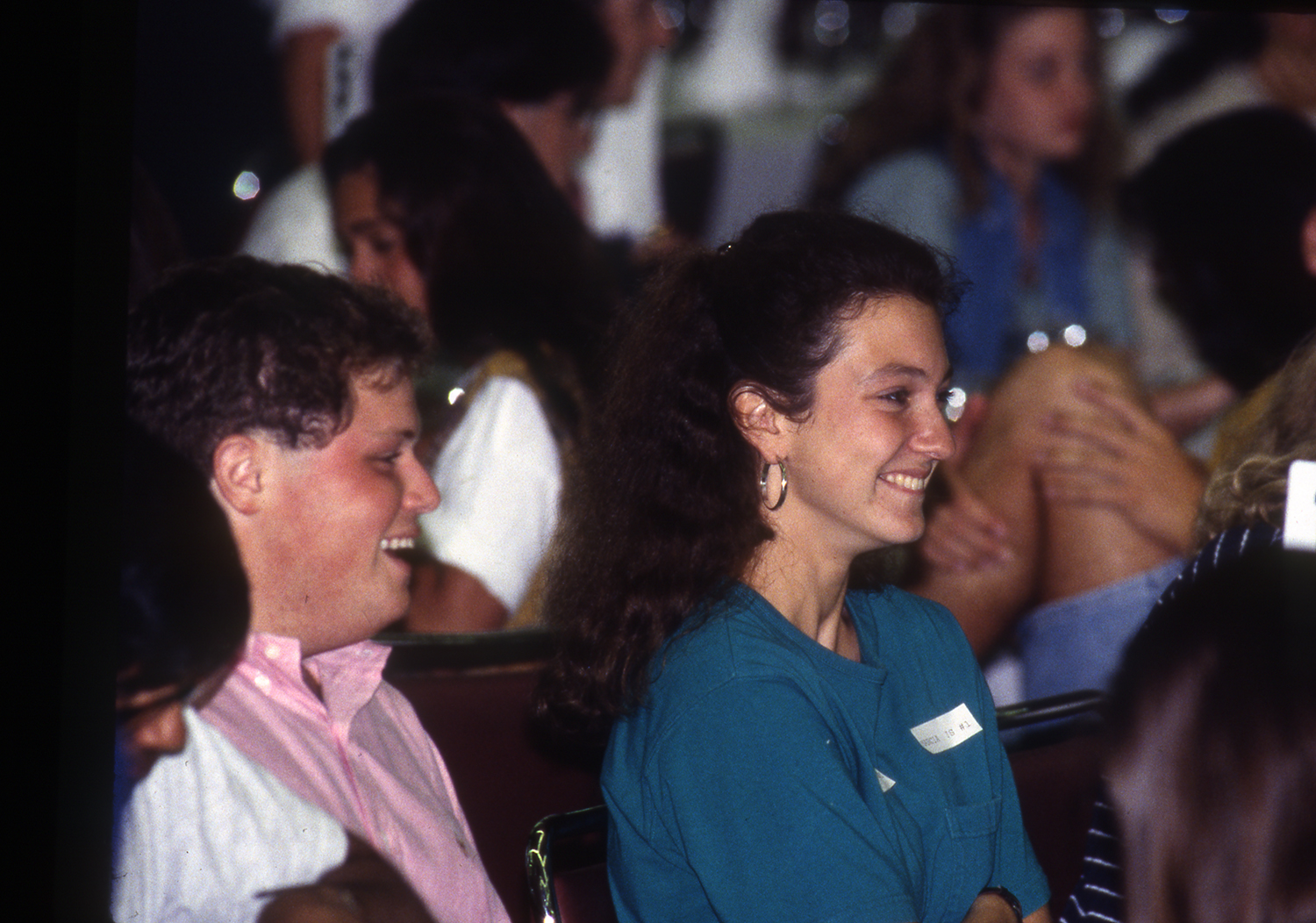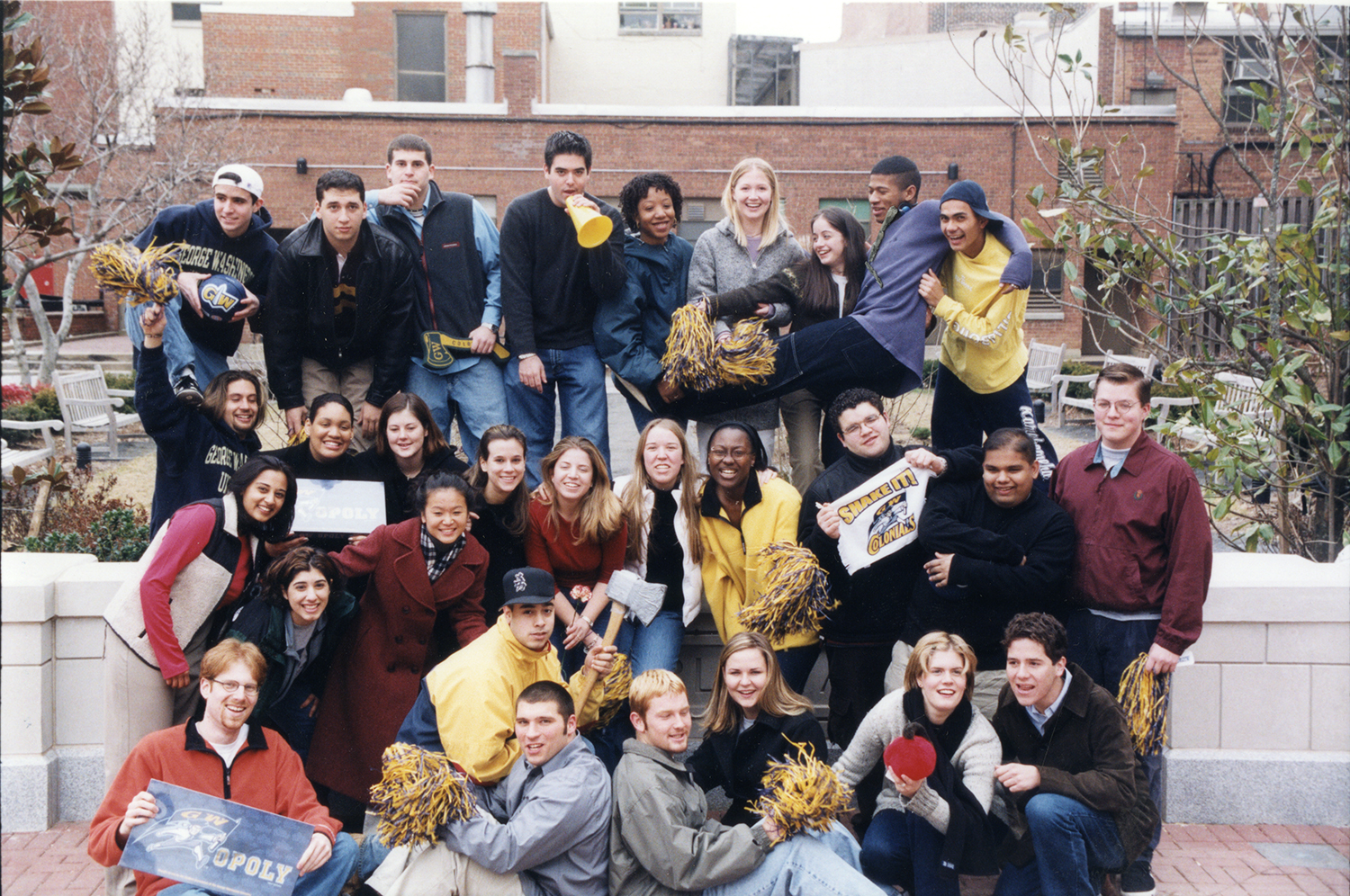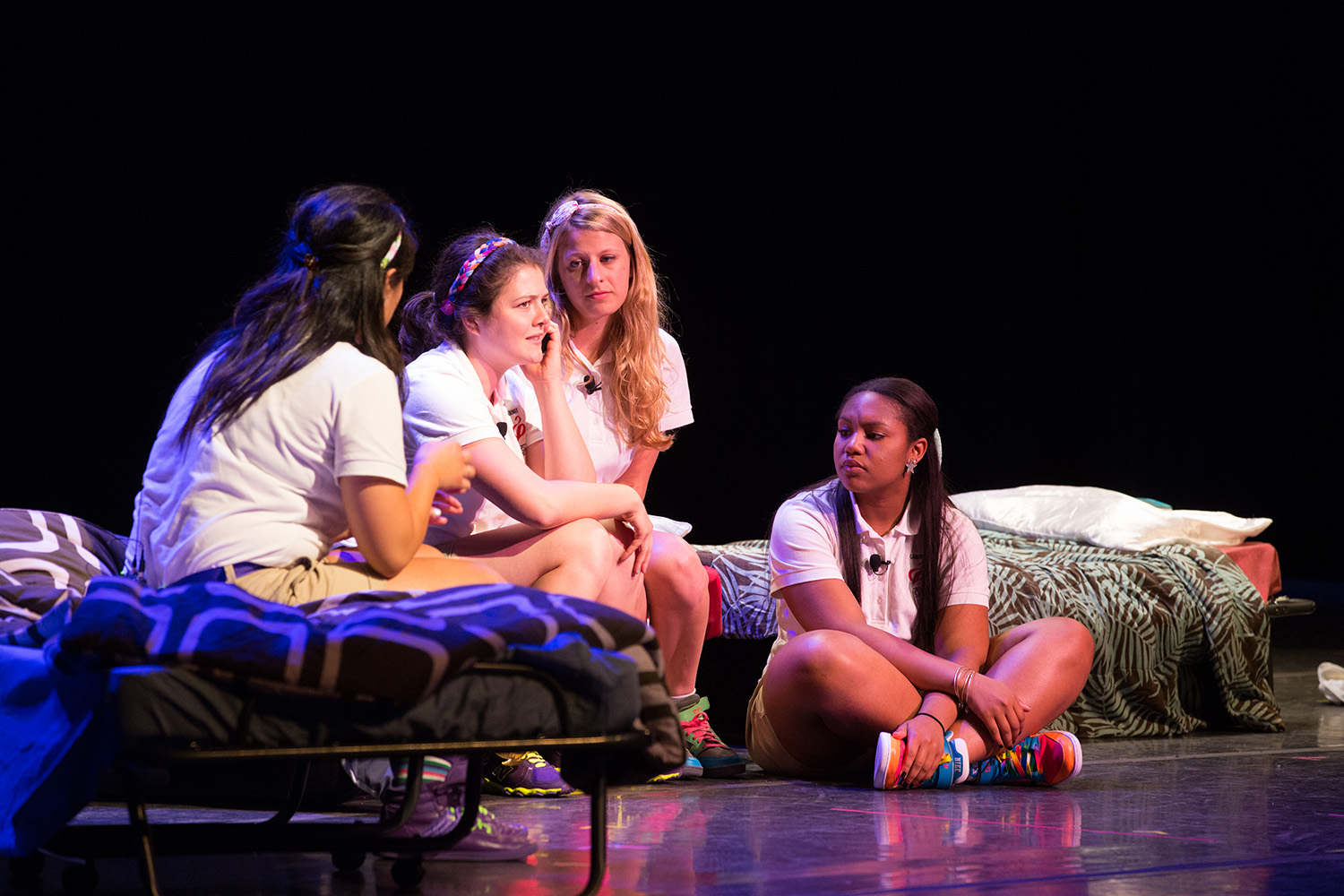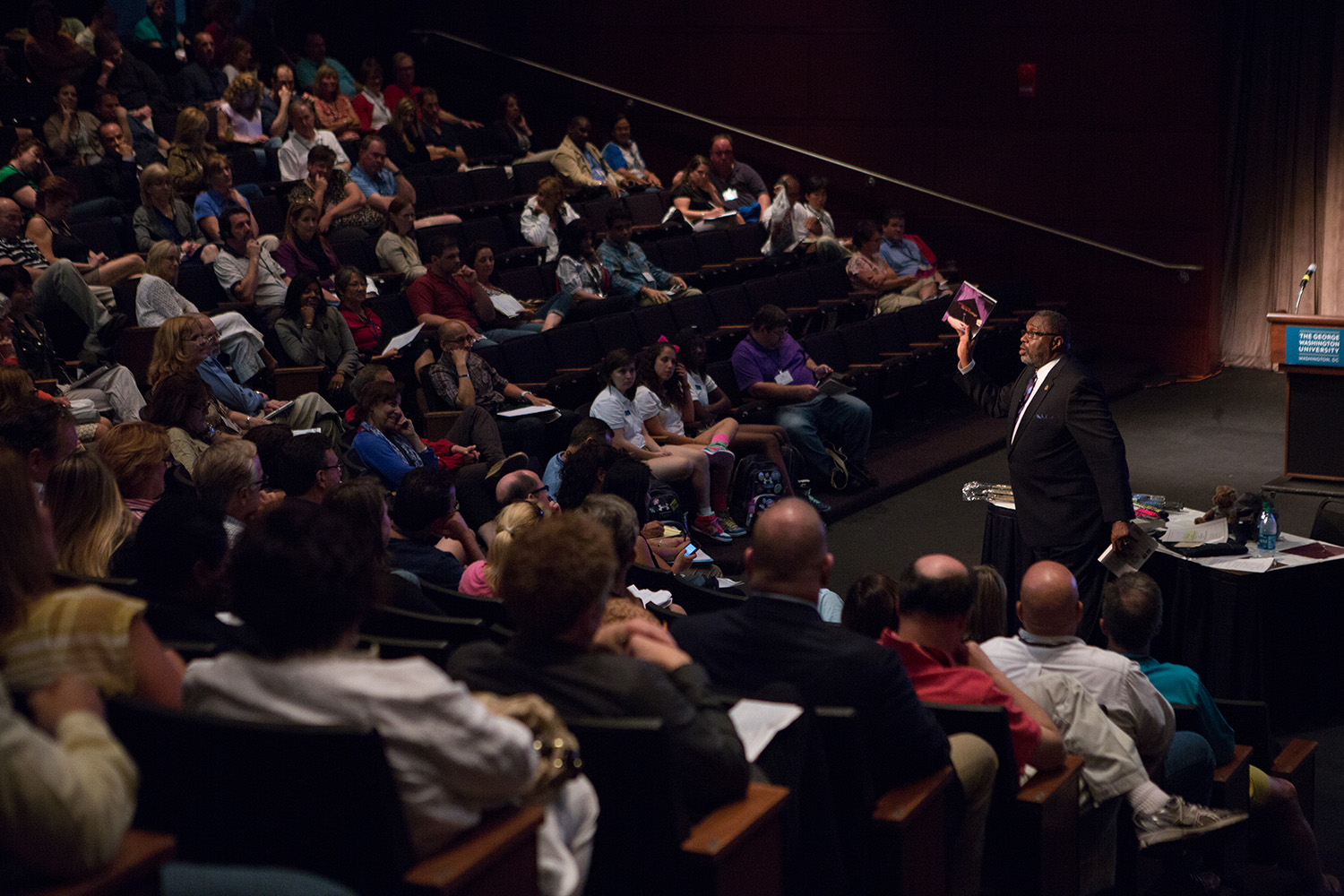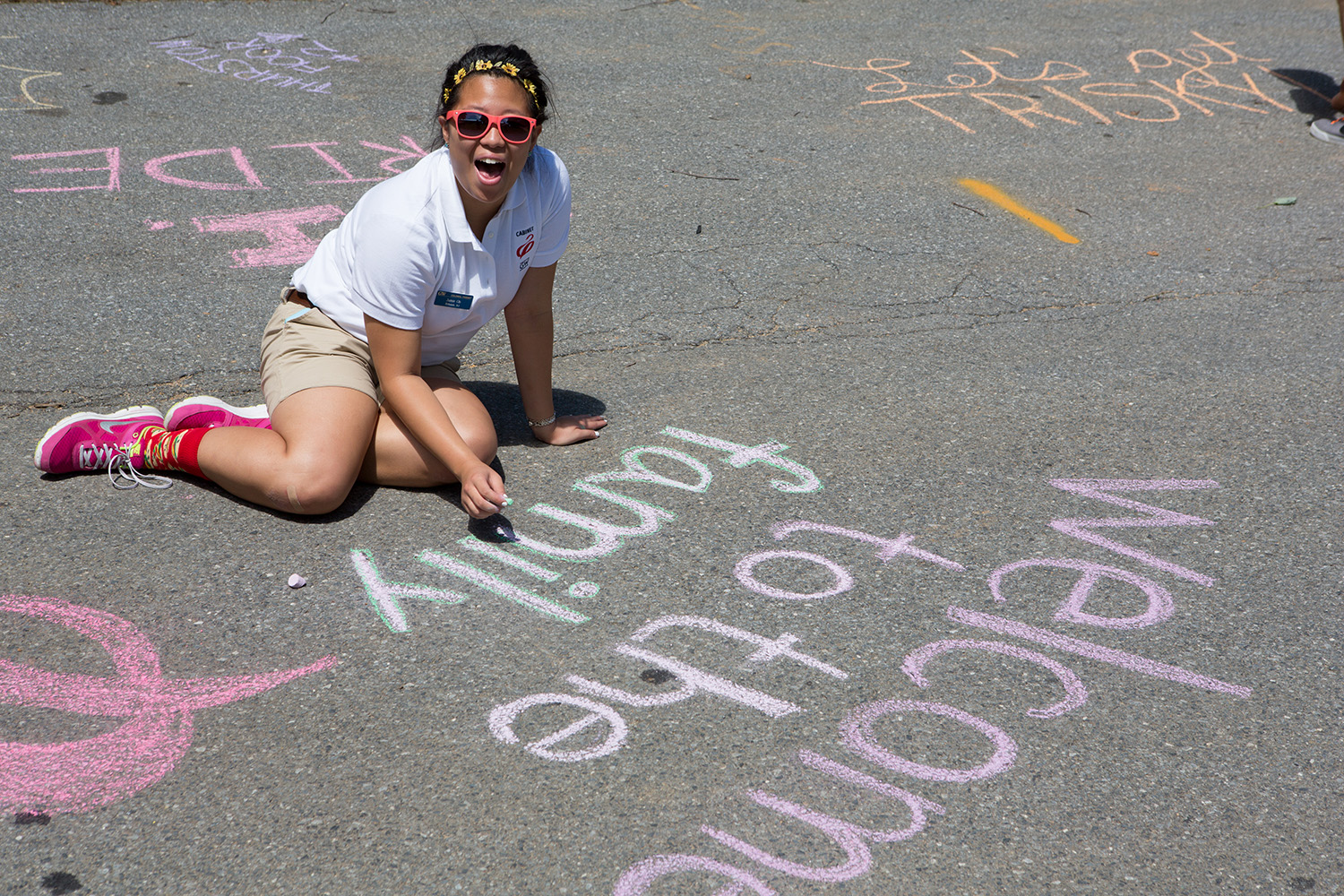Each year, the George Washington University produces a diverse class of graduates, many of whom go on to become senators, actresses, top athletes and leaders in a range of industries. Though every student pursues a different path after walking across the stage at Commencement, each student starts his or her journey at the same place— Colonial Inauguration.
The first session of CI was held during the summer of 1990 and over its 25-year history, the summer orientation program has become a much-loved tradition that welcomes students and their families to the GW community.
“The university has worked to build on-campus traditions over the past few decades, and CI and Commencement have become the two cornerstones of the GW experience,” Vice Provost and Dean of Student Affairs Peter Konwerski, B.A. ’91, M.A. ’94, Ed. D. ’97, said. “CI ensures that students are successful academically and beyond as they embark on their college careers.”
Planning for CI was launched in 1989 by then-President Stephen Joel Trachtenberg to strengthen the campus identity. Then-Vice President Robert A. Chernak, Ed.D. ’97 and Helen Cannaday Saulny, who acted as a special assistant to Dr. Chernak, played a pivotal role in the development of the program.
Nearly 1,100 incoming undergraduate students and their families participated in the first CI, a small number compared with the more than 5,000 students and family members who will attend the two and a half day program over the course of five sessions during summer 2014.
A group of nearly 50 student staffers, including 33 Colonial Cabinet members representing three countries and 21 states, will guide incoming students and parents through a high-energy schedule of activities that provide insight into academics, student engagement, campus resources and alumni connections.
“Students are exposed to academics through the ‘GW Academic Experience’ event, which teaches students how to interact and engage with faculty in a college classroom,” CI Director and Assistant Director for Hallmark Programs Anne Moore said. “CI also offers a glimpse into university life with the popular ‘Scenes from College Life’ performance and other activities.”
Dr. Konwerski fondly remembers an enthusiastic staff and cherry pie giveaways during the first CI, held when he was a rising senior. The following semester he joined the Colonial Cabinet selection team as a student intern in Student and Academic Support Services which later became the Division of Student Affairs.
“I was exploring a career in student affairs and working with former Director of New Student Programs Steve Loflin, the CEO and founder of the National Society of Collegiate Scholars,” Dr. Konwerski said. “He was instrumental in working with Dr. Chernak and Ms. Cannaday Saulny to transform the Summer Advanced Registration Program into CI.”
By 1992, Dr. Konwerski had transitioned from a graduate assistant role to the program coordinator for campus activities. His duties included contributing to the planning of CI and supporting the Colonial Cabinet.
Executive Director of Planning and Outreach Robert Snyder, B.B.A. ’95, was an incoming freshman in 1991, the second year of the program.
“The most rewarding part of that experience was getting a preview of life at GW— from being a marketing major in GWSB to getting involved with student activities and living in Thurston Hall,” Mr. Snyder said. “Fast forward 25 years and participating in CI as a GW staff member continues to be a small way for me to pay forward all that GW has given to me.”
Ms. Moore said that programming for students is enhanced based on emerging trends in the student body. Ever evolving, CI now includes a fall and spring session for transfer students and special workshops that address the specific needs of international students.
“As the percentage of international students has risen at GW, we wanted to create a cohesive transition that matches their experience,” Ms. Moore said. “To that end, we merged the International Student Orientation presented by the International Services Office with CI in 2013 to much success.”
CI has also always been geared toward welcoming parents and families to GW. That tradition lives on through the CI Siblings program and the work of the Office of Parent Services and GW Parents’ Association.
Executive Director of Parent Services Rodney Johnson, who has worked with the program for 24 years, offers two workshops, “GW 101” and “Parents Are a Priority,” to guide parents through the process of sending their children to GW guide parents through the process of sending their children to GWand offer suggestions for engaging in the university community.
He also started a tradition of sitting down with parents for informal conversation over dinner at Aroma Indian Restaurant before strolling to the White House—an experience that highlights GW’s prime location in the heart of D.C., he said.
“Parents often have a lot of questions and concerns about sending their sons and daughters away to school,” Mr. Johnson said. “After introducing them to faculty, staff and administrators, giving them information about on campus resources and academics and teaching them about the benefits of having their child attend a university in the nation’s capital, they inevitably say, ‘Wow, now I understand why my child chose GW.’”
Though many things about CI have changed, many traditions have remained the same—from enjoying the Buff and Blue BBQ and meeting student leaders and faculty, to learning the fight song, getting to know academic advisors and administrators and touring the monuments at midnight.
The high-intensity introduction can be a lot for incoming students to absorb, but at its core CI is an opportunity for students to get to know their home for the next four years, Ms. Moore said.
Speaking from experience as an alumnus and staff member, Mr. Snyder agreed.
“CI is a time for new students to make connections with each other that they will carry forward into freshman year, the rest of their time at GW and, I hope, to life beyond their undergraduate careers, as has been the case for me.”


